Introduction: Understanding Aircraft Registration and Ownership Transfer in Qatar
In recent years, the aviation sector in Qatar has witnessed significant advancements, driven by both regulatory reforms and economic growth. For UAE-based businesses, high net-worth individuals, airlines, and legal professionals, a clear understanding of aircraft registration and ownership transfer procedures in Qatar is increasingly critical. Qatar’s progressive aviation laws, managed by the Qatar Civil Aviation Authority (QCAA), have introduced streamlined processes and heightened compliance standards. These developments are highly relevant for entities in the UAE region that operate cross-border fleets, invest in aviation assets, or manage multinational operations. Recent legal updates and harmonization initiatives under international conventions, including the Cape Town Convention, also underscore the strategic importance of compliance and due diligence in the transactional lifecycle of aircraft assets.
This comprehensive guide provides a consultancy-grade legal analysis of Qatar’s aircraft registration and ownership transfer frameworks, offering not only an explanation of the current laws but also practical insights, risk assessments, comparative perspectives, and tailored recommendations for clients seeking to navigate this complex regulatory landscape effectively.
Table of Contents
- Legal Framework Overview
- Aircraft Registration Process in Qatar
- Aircraft Ownership Transfer Procedures in Qatar
- Comparative Analysis with UAE Law
- Risks of Non-Compliance and Mitigation Strategies
- Case Studies and Practical Examples
- Consultancy Insights and Best Practices
- Conclusion and Forward View
Legal Framework Overview
Primary Legislation and Authorities
The regulatory landscape for aircraft registration and ownership in Qatar is primarily shaped by the Civil Aviation Law (Law No. 15 of 2002), as amended by subsequent ministerial decisions and QCAA regulations. The Qatar Civil Aviation Authority acts as the central administrative and supervisory body, overseeing compliance, registration, airworthiness, and ownership matters. Qatar is also signatory to key international conventions – particularly the Chicago Convention (1944) and the Cape Town Convention (2001) – embedding international best practices within its legal processes.
Key Provisions and Recent Updates
Recent amendments, including QCAA directives on digital registry systems and procedures for non-Qatari ownership participation, have modernized the process, enhancing transparency and efficiency. Understanding these updates is essential for UAE clients, particularly with cross-jurisdictional transactions becoming more frequent.
| Regulation | Short Summary | Official Reference |
|---|---|---|
| Civil Aviation Law No. 15 of 2002 | Establishes rules for registration, nationality, and transfer | State of Qatar Official Gazette, Law No. 15/2002 |
| QCAA Registration Regulations (2022 Revision) | Streamlines registration steps, emphasizing digital applications | QCAA Circular 2022/07 |
| Cape Town Convention (2001) | Sets international standards for interests in aircraft | UNIDROIT Treaty Database |
Aircraft Registration Process in Qatar
Eligibility for Registration
Aircraft may be registered in Qatar if they are owned (or leased) by Qatari nationals, entities incorporated under Qatari law, or, under specific conditions, foreign legal entities with significant operations in Qatar. Non-Qatari ownership is permitted under certain regulatory exemptions, aligning with bilateral air services agreements and investment protection protocols – an important consideration for UAE entities with diverse ownership structures.
Application Submission and Required Documentation
The registration process begins with an application to the QCAA, supported by documents such as purchase contracts, valid airworthiness certificates, identity proofs of owners, evidence of de-registration from any previous registry, and – where applicable – lease or financing agreements. All documentation must be submitted in English or accompanied by a certified Arabic translation.
Suggested Diagram: A process flow chart summarizing each registration step, from document assembly to QCAA’s final issuance of the Qatari nationality mark and registration certificate.
QCAA Review and Registration Certificate Issuance
Upon submission, the QCAA conducts a thorough review, including inspection of aircraft, verification of ownership chain, and assessment of regulatory compliance. Approval culminates in issuing:
- The Certificate of Registration (CoR)
- Allocation of Qatari nationality and registration marks (typically A7-XXX series)
- Entry into the official Aircraft Register, a public record maintained by QCAA
Practical Insights for UAE Clients
For UAE businesses, early engagement with local counsel and experienced aviation consultants in Qatar is paramount to ensure timely certification and to navigate the translation and authentication requirements. Delays often occur in cross-border acquisitions due to mismatches in documentation or pending de-registration approvals from foreign authorities.
| Step | Responsible Party | Key Documents | Indicative Timelines |
|---|---|---|---|
| Preparation & Application | Owner/Legal Counsel | Ownership proof, airworthiness, identity docs | 2-4 weeks |
| QCAA Verification | QCAA Inspectors | Full submission file | 1-2 weeks |
| Certificate Issuance | QCAA | All core documents | 1 week |
Aircraft Ownership Transfer Procedures in Qatar
Key Legal Requirements
Ownership transfers are governed by the provisions of Law No. 15 of 2002 and procedural circulars issued by the QCAA. Both voluntary (sale, gift) and involuntary (security enforcement, death, court order) transfers are covered. A valid, notarized transfer instrument – typically a bill of sale – is a fundamental legal prerequisite. Where the aircraft is subject to a mortgage or lien, consent from the mortgagee and proper discharge of encumbrances is essential before new ownership can be registered.
Transfer Registration Procedure
- Initiation: Both outgoing and incoming parties, often via their legal counsel, must jointly notify the QCAA and submit a transfer application, including the bill of sale and supporting documents.
- QCAA Due Diligence: The Authority verifies the authenticity of transfer instruments, checks for outstanding liabilities or encumbrances, and ensures that the new owner (or lessor) fulfills legal eligibility.
- Issuance of New Certificate: Upon satisfactory review, the QCAA cancels the previous CoR, issues a new one in the name of the transferee, and updates the Aircraft Register.
- Regulatory Notifications: Parties must comply with any parallel notifications, such as export control clearances or third-party interests (e.g., financiers consents under the Cape Town Convention framework).
Financing and Cape Town Convention Implications
Given Qatar’s accession to the Cape Town Convention, international interests registered on the IDERA (Irrevocable De-Registration and Export Request Authorisation) are enforceable. Financiers and lessors have direct rights to deregister and export an aircraft in the event of default, streamlining cross-border repossessions and reducing transaction risks compared to pre-convention frameworks. UAE clients, especially financial institutions, should ensure their interests are recorded both locally and with the International Registry.
Compliance Checklist Suggestion
- Due diligence on ownership title
- Verification and discharge of any security interests
- Execution and notarization of transfer documents
- Consent from all required parties (including regulatory bodies, lessors, mortgagees)
- Submission of updated airworthiness and insurance documentation
- Notification to relevant authorities (QCAA, International Registry)
Timeline and Cost Considerations
While Qatar has made substantial progress in shortening procedural timelines, potential bottlenecks often involve settlement of pre-existing debts, tax clearances, or delays in cross-border communication. A typical transfer may require 2–6 weeks depending on the complexity of the ownership structure and the existence of international security interests.
Comparative Analysis with UAE Law
Key Differences and Similarities
While Qatar and the UAE share a similar regulatory ethos and have both implemented the Cape Town Convention provisions, notable procedural and documentary nuances remain. The UAE’s General Civil Aviation Authority (GCAA) enforces additional requirements related to economic substance and local presence, and certain free zone entities are ineligible for direct registration.
| Aspect | Qatar (QCAA) | UAE (GCAA) |
|---|---|---|
| Governing Law | Civil Aviation Law No. 15/2002 | Federal Law No. 20 of 1991 (Civil Aviation) |
| Eligibility | Foreign, with conditions | Predominantly UAE nationals/entities |
| International Registry | Mandatory for secured transactions | Mandatory but locally administered |
| Ownership Transfer | Notarized bill of sale, QCAA approval | Similar + additional substance tests |
| Compliance Documents | English or certified Arabic | Mainly Arabic originals |
Implications for Cross-Border Deals
Stakeholders executing transactions between the UAE and Qatar should prioritize proactive coordination, especially in the context of export/import deregistrations, central bank clearances, and international security filings. Legal advisors should carefully compare registry formalities and harmonize documentation standards between jurisdictions to avoid delays.
Risks of Non-Compliance and Mitigation Strategies
Sanctions and Operational Risks
Non-compliance with QCAA requirements can lead to sanctions including hefty fines, deregistration, groundings, and even criminal liability in cases of fraudulent misrepresentation or unauthorized operations. Unregistered transfers are void against third parties, weakening security and title claims – particularly hazardous for lenders, lessors, and investors partnering with UAE-based financing or leasing entities.
| Non-Compliance Scenario | Consequence | Mitigation Strategy |
|---|---|---|
| Failure to register change of ownership | Transaction unenforceable; risk of asset seizure | Immediate post-closing filing and legal notification |
| Omitted international interest registration | Loss of priority in case of insolvency | Dual registration: local + International Registry |
| Non-disclosure of encumbrances | Batchable liability, loss of financing | Comprehensive due diligence; legal disclosures |
Strategies for Ensuring Compliance
- Engage local counsel early to cross-check regulatory requirements and timelines
- Employ transaction checklists and standard operating procedures for all deals
- Leverage digital registry platforms for real-time status monitoring
- Maintain ongoing liaison with both QCAA and UAE GCAA for cross-border scenarios
Case Studies and Practical Examples
Example 1: GCC Commercial Airline Acquisition
A UAE-based operator plans to acquire a Qatari-registered aircraft. Due diligence revealed an existing international interest registered under the Cape Town Convention in favour of a UK financier. The parties coordinated simultaneous settlement and registry updates both at the QCAA and International Registry, ensuring the new owner gained clear, undisputed title. Failure to settle the international interest would have resulted in a clouded title and possible deregistration.
Example 2: Business Jet Transfer with Multinational Ownership
An investment consortium with UAE, Qatari, and European partners sought to transfer ownership of a corporate jet registered in Qatar. The key challenge was providing evidence of beneficial ownership across different legal systems. The solution involved a tri-party agreement, certified translations, and QCAA-sanctioned escrow arrangements to manage funds and paperwork.
Example 3: Unscheduled Repossession Due to Default
A leading UAE leasing company invoked IDERA provisions after a Qatari lessee defaulted. Thanks to Cape Town Convention enforcement, the lessor was able to deregister and repatriate the aircraft swiftly – minimizing loss. This contrasts with pre-2007 procedures, where such processes were lengthy and susceptible to local contestation.
Consultancy Insights and Best Practices
Recommendations for Corporate Clients and Legal Teams
- Initiate early regulatory due diligence to identify issues related to eligibility, existing encumbrances, or local-to-international procedural friction.
- Utilize QCAA’s digital application systems and track submission status to reduce delays.
- Secure notarized Arabic translations of all critical documents regardless of the underlying language of the transaction.
- In cross-border transactions, harmonize documentation and compliance requirements between QCAA and UAE GCAA, particularly regarding ownership structures and economic substance.
- Ensure registration with both the QCAA and the International Registry for all security interests, thereby maximizing asset protectiveness in default or insolvency scenarios.
- Maintain robust records and implement transaction checklists for post-completion audits and regulatory inspections.
- Arrange for training sessions and legal updates for internal teams, focusing on the latest QCAA circulars and international best practices.
Visual Placement Suggestion
Insert a compliance checklist visual summarizing the ten-step process for a successful aircraft registration or transfer, easily printable for in-house teams.
Conclusion and Forward View
The evolving regulatory framework for aircraft registration and ownership transfer in Qatar presents attractive opportunities for UAE-based businesses, financial institutions, and aviation sector stakeholders. Recent enhancements, driven by the QCAA and harmonization with international standards, have modernized the process and increased legal certainty. Nevertheless, with these changes comes the imperative for rigorous due diligence, proactive compliance management, and careful coordination between Qatari and UAE legal teams.
Looking ahead, further digitization, potential regional registry integration, and expanded international cooperation are likely to continue shaping best practices in this field. Clients are well-advised to adopt a forward-looking compliance strategy, engage specialist advisors early in the transaction lifecycle, and remain attentive to new regulatory changes. By doing so, they can leverage the benefits of Qatar’s legal regime while minimizing transactional risks – an approach that will remain foundational as the Gulf’s aviation market continues to flourish.




